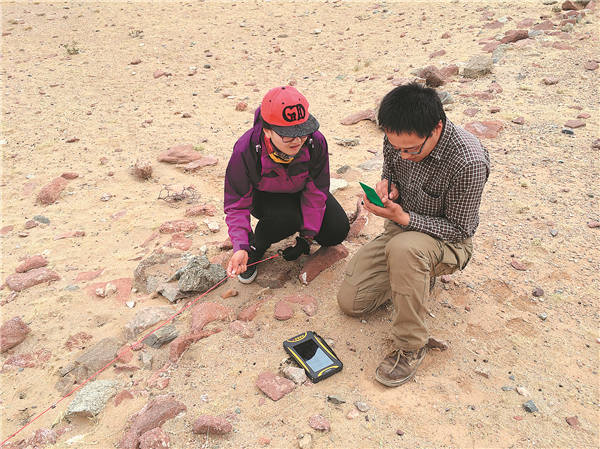

Occasionally, Liu said he has encountered potential criminal behavior.
"Last year I came across tourists using a metal detector to look for coins. I immediately stopped them and reported the incident to the government," he said.
To enhance communication, the team has a work group on WeChat, where the volunteers upload photos and records of their patrols, and report newly discovered sites.
Sarnai, a 28-year-old team member who majored in relic authentication and repair at Chifeng University in Inner Mongolia, said she really enjoys her job overseeing beacon towers and one of the museums. She occasionally stumbles on something fascinating during patrols.
"Sometimes I get really excited when I find beautiful rock paintings. They are precious gifts from our ancestors," she said.
Sarnai patrols the sites monthly to check on damage or anything out of the ordinary, and she also works to raise awareness of cultural heritage protection among residents.
"We have to depend on local people to protect cultural relics, to improve their awareness about the heritage protection and gain their support," she said.
According to Cao Jian'en, director of Inner Mongolia's Cultural Heritage Administration, protection efforts are now part of the evaluation of the performance of officials at the regional, city and banner levels. In the past six years, the group has teamed up with police to crack rings of tomb robbers and has successfully curbed illegal oil and mineral exploration activities.
Love of their hometown and passion for cultural relics are both characteristics shared by the volunteers. In June, members were honored as the country's "most beautiful guardians" by the National Cultural Heritage Administration. It was the only group to win the title among a total of 20 individual recipients nationwide.